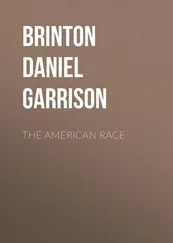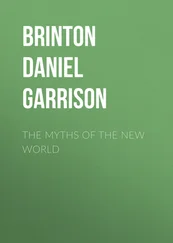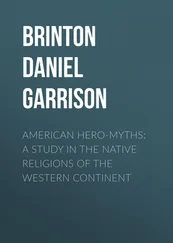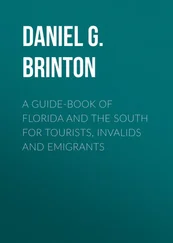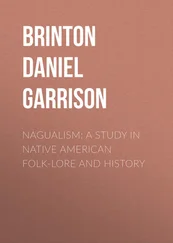Daniel Brinton - The Lenâpé and their Legends
Здесь есть возможность читать онлайн «Daniel Brinton - The Lenâpé and their Legends» — ознакомительный отрывок электронной книги совершенно бесплатно, а после прочтения отрывка купить полную версию. В некоторых случаях можно слушать аудио, скачать через торрент в формате fb2 и присутствует краткое содержание. Жанр: foreign_antique, foreign_prose, на английском языке. Описание произведения, (предисловие) а так же отзывы посетителей доступны на портале библиотеки ЛибКат.
- Название:The Lenâpé and their Legends
- Автор:
- Жанр:
- Год:неизвестен
- ISBN:нет данных
- Рейтинг книги:4 / 5. Голосов: 1
-
Избранное:Добавить в избранное
- Отзывы:
-
Ваша оценка:
- 80
- 1
- 2
- 3
- 4
- 5
The Lenâpé and their Legends: краткое содержание, описание и аннотация
Предлагаем к чтению аннотацию, описание, краткое содержание или предисловие (зависит от того, что написал сам автор книги «The Lenâpé and their Legends»). Если вы не нашли необходимую информацию о книге — напишите в комментариях, мы постараемся отыскать её.
The Lenâpé and their Legends — читать онлайн ознакомительный отрывок
Ниже представлен текст книги, разбитый по страницам. Система сохранения места последней прочитанной страницы, позволяет с удобством читать онлайн бесплатно книгу «The Lenâpé and their Legends», без необходимости каждый раз заново искать на чём Вы остановились. Поставьте закладку, и сможете в любой момент перейти на страницу, на которой закончили чтение.
Интервал:
Закладка:
Daniel G. Brinton
The Lenâpé and their Legends
PREFACE
In the present volume I have grouped a series of ethnological studies of the Indians of Eastern Pennsylvania, New Jersey and Maryland, around what is asserted to be one of the most curious records of ancient American history.
For a long time this record – the Walam Olum, or Red Score – was supposed to have been lost. Having obtained the original text complete about a year ago, I printed a few copies and sent them to several educated native Delawares with a request for aid in its translation and opinions on its authenticity. The results will be found in the following pages.
The interest in the subject thus excited prompted me to a general review of our knowledge of the Lenape or Delawares, their history and traditions, their language and customs. This disclosed the existence of a number of MSS. not mentioned in bibliographies, some in the first rank of importance, especially in the field of linguistics. Of these I have made free use.
In the course of these studies I have received suggestions and assistance from a number of obliging friends, among whom I would mention the native Delawares, the Rev. Albert Anthony, and the Rev. John Kilbuck; Mr. Horatio Hale and the Right Rev. E. de Schweinitz; Dr. J. Hammond Trambull, Prof. A. M. Elliott and Gen. John Mason Brown.
Not without hesitation do I send forth this volume to the learned world. Regarded as an authentic memorial, the original text of the Walam Olum will require a more accurate rendering than I have been able to give it; while the possibility that a more searching criticism will demonstrate it to have been a fabrication may condemn as labor lost the pains that I have bestowed upon it. Yet even in the latter case my work will not have been in vain. There is, I trust, sufficient in the volume to justify its appearance, apart from the Red Score; and the latter, by means of this complete presentation, can now be assigned its true position in American archaeology, whatever that may be.
CHAPTER I
§ 1. The Algonkin Stock.
Scheme of its Dialects – Probable Primitive Location
§ 2. The Iroquis Stock.
The Susquehannocks – The Hurons – The Cherokees
About the period 1500-1600, those related tribes whom we now know by the name of Algonkins were at the height of their prosperity. They occupied the Atlantic coast from the Savannah river on the south to the strait of Belle Isle on the north. The whole of Newfoundland was in their possession; in Labrador they were neighbors to the Eskimos; their northernmost branch, the Crees, dwelt along the southern shores of Hudson Bay, and followed the streams which flow into it from the west, until they met the Chipeways, closely akin to themselves, who roamed over the water shed of Lake Superior. The Blackfeet carried a remote dialect of their tongue quite to the Rocky Mountains; while the fertile prairies of Illinois and Indiana were the homes of the Miamis. The area of Ohio and Kentucky was very thinly peopled by a few of their roving bands; but east of the Alleghanies, in the valleys of the Delaware, the Potomac and the Hudson, over the barren hills of New England and Nova Scotia, and throughout the swamps and forests of Virginia and the Carolinas, their osier cabins and palisadoed strongholds, their maize fields and workshops of stone implements, were numerously located.
It is needless for my purpose to enumerate the many small tribes which made up this great group. The more prominent were the Micmacs of Nova Scotia, the Abnakis of Maine, the Pequots and Narragansets, in New England, the Mohegans of the Hudson, the Lenape on the Delaware, the Nanticokes around Chesapeake Bay, the Pascataway on the Potomac, and the Powhatans and Shawnees further south; while between the Great Lakes and the Ohio river were the Ottawas, the Illinois, the Pottawatomies, the Kikapoos, Piankishaws, etc.
The dialects of all these were related, and evidently at some distant day had been derived from the same primitive tongue. Which of them had preserved the ancient forms most closely, it may be premature to decide positively, but the tendency of modern studies has been to assign that place to the Cree – the northernmost of all.
We cannot erect a genealogical tree of these dialects. It is not probable that they branched off, one after another, from a common stock. The ancient tribes each took their several ways from a common centre, and formed nuclei for subsequent development. We may, however, group them in such a manner as roughly to indicate their relationship. This I do on the following page: —
Cree,
Old Algonkin,
Montagnais.
Chipeway,
Ottawa,
Pottawattomie,
Miami,
Peoria,
Pea,
Piankishaw,
Kaskaskia,
Menominee,
Sac,
Fox,
Kikapoo.
Sheshatapoosh,
Secoffee,
Micmac,
Melisceet,
Etchemin,
Abnaki.
Mohegan,
Massachusetts,
Shawnee,
Minsi, }
Unami, }
Unalachtigo,}
Nanticoke,
Powhatan,
Pampticoke.
Blackfoot,
Gros Ventre,
Sheyenne.
Granting, as we must, some common geographical centre for these many dialects, the question where this was located becomes an interesting one.
More than one attempt to answer it has been made. Mr. Lewis H. Morgan thought there was evidence to show that the valley of the Columbia river, Oregon, "was the initial point from which the Algonkin stock emigrated to the great lake region and thence to the Atlantic coast." [1] Footnote_1_1 Lewis H. Morgan, Indian Migrations , in Beach's Indian Miscellany , p. 218.
This is in direct conflict with the evidence of language, as the Blackfoot or Satsika is the most corrupt and altered of the Algonkin dialects. Basing his argument on this evidence, Mr. Horatio Hale reaches a conclusion precisely the reverse of that of Morgan. "The course of migration of the Indian tribes," writes Mr. Hale, "has been from the Atlantic coast westward and southward. The traditions of the Algonkins seem to point to Hudson's Bay and the coast of Labrador." [2] Footnote_2_2 H. Hale, Indian Migrations as Evidenced by Language , p. 24. (Chicago, 1883.)
This latter view is certainly that which accords best with the testimony of language and of history.
We know that both Chipeways and Crees have been steadily pressing westward since their country was first explored, driving before them the Blackfeet and Dakotas. [3] Footnote_3_3 See the R. P. A. Lacombe Dictionnaire de la Langue des Cris. Introd. , p. xi. (Montreal, 1874.)
The Cree language is built up on a few simple, unchangeable radicals and elementary words, denoting being, relation, energy, etc.; it has extreme regularity of construction, a single negative, is almost wholly verbal and markedly incorporative, has its grammatical elements better defined than its neighbors, and a more consistent phonetic system. [4] Footnote_4_4 See Joseph Howse, A grammar of the Cree Language , p. 13, et al. (London, 1842)
For these and similar reasons we are justified in considering it the nearest representative we possess of the pristine Algonkin tongue, and unless strong grounds to the contrary are advanced, it is proper to assume that the purest dialect is found nearest the primeval home of the stock.
Surrounded on all sides by the Algonkins were the Iroquois , once called the Five or Six Nations. When first discovered they were on the St. Lawrence, near Montreal, and in the Lake Region of Central New York. Various other, tribes, not in their confederacy, and generally at war with them, spoke dialects of the same language. Such were the Hurons or Wyandots, between the Georgian Bay and Lake Erie, the Neutral Nation on the Niagara river, the Eries on the southern shore of the lake of that name, the Nottoways in Virginia, and the Tuscaroras in North Carolina. The Cherokees, found by the whites in East Tennessee, but whose national legend, carefully preserved for generations, located them originally on the head waters of the Ohio, were a remote offshoot of this same stem.
Читать дальшеИнтервал:
Закладка:
Похожие книги на «The Lenâpé and their Legends»
Представляем Вашему вниманию похожие книги на «The Lenâpé and their Legends» списком для выбора. Мы отобрали схожую по названию и смыслу литературу в надежде предоставить читателям больше вариантов отыскать новые, интересные, ещё непрочитанные произведения.
Обсуждение, отзывы о книге «The Lenâpé and their Legends» и просто собственные мнения читателей. Оставьте ваши комментарии, напишите, что Вы думаете о произведении, его смысле или главных героях. Укажите что конкретно понравилось, а что нет, и почему Вы так считаете.



